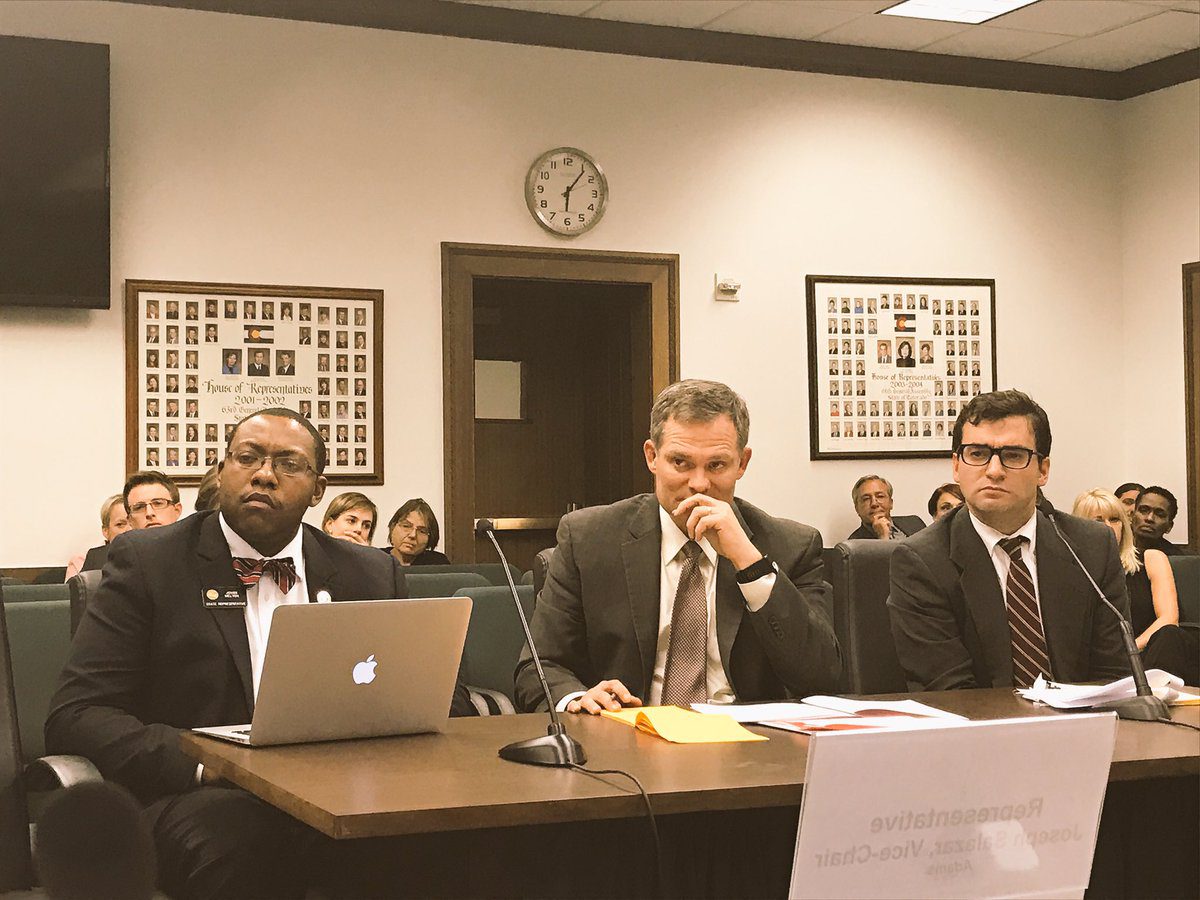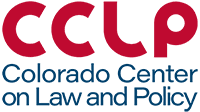Colorado health advocates presented to the Joint Budget Committee on glitch-plagued Public Health Emergency Unwind.
Recent articles
2024 Legislative session: addressing economic challenges at the individual and state level
Addressing economic challenges at the individual and state level after the 2024 Colorado legislative session.
CCLP’s 2024 legislative wrap-up, part 2
CCLP's 2024 legislative wrap-up focused on expanding access to justice, removing administrative burden, supporting progressive tax and wage policies, preserving affordable communities, and reducing health care costs. Part 2/2.
CCLP’s 2024 legislative wrap-up, part 1
CCLP's 2024 legislative wrap-up focused on expanding access to justice, removing administrative burden, supporting progressive tax and wage policies, preserving affordable communities, and reducing health care costs.
How CCLP Led ‘Ban the Box’ Legislation

Developing successful policy often requires a combination of persuasive research, thoughtful strategy, strong partnerships, good luck, and above all, perseverance.
All of those ingredients came together over the past eight years to advance House Bill 1025, which will head to Gov. Jared Polis’ desk to hopefully become law now that it’s been approved by Colorado legislators with bipartisan support. Sponsored by Reps. Leslie Herod and Jovan Melton and Sens. Mike Foote and Robert Rodriguez, HB 1025 prohibits employers from asking about criminal history on an initial employment application. If signed by the governor, Colorado will join 11 other states with similar laws on the books for the private sector.
Colorado Center on Law and Policy tilled the ground for this bill by developing two previous iterations and built support for “ban the box” legislation in 2016 and 2017. But the impetus for the work goes back years earlier.
Claire Levy, now Executive Director of CCLP, noted that while serving as a state legislator more than half a decade ago, she asked CCLP to consider developing a criminal justice agenda addressing the disproportionate effect of mass incarceration on Coloradans living on low wages. At that time, she was told that such work was out of the organization’s scope.
Foundational work
An attorney who once worked at the public defenders’ appellate division office, Claire reconnected with her interest in criminal justice legislation while serving on the House Judiciary Committee. She was concerned that too many of the state’s resources were going into the Department of Corrections to accommodate the growing prison population, rather than applying the funds to higher education to benefit her constituents in Boulder, home of the University of Colorado.
“We had more than half of (Colorado’s prison population) coming out of prison and going back again,” Claire recalled. “That’s a completely ineffective state agency. So, if we need more money for other things, we’ve got to make the criminal justice system actually work and we’ve got to make the Department of Corrections work better.”
In 2012, Claire sponsored HB 1263, which prohibits state the state from performing a background check until the agency determines that the applicant is a finalist for the position or the applicant receives a conditional offer. She also sponsored legislation to prohibit licensing agencies from disqualifying people based on an irrelevant criminal background. Studies have shown that similar ban the box policies resulted in more people with criminal records getting jobs – allowing them to support themselves and their families and stay out of prison.
Questions about criminal history have long imposed an employment barrier to Coloradans. Employers are likely to rule out prospects who acknowledge their criminal history without considering them for an interview.
Individuals, families and society pay the price when people can’t enter the workforce because of the stigma associated with a past criminal history. And maintaining meaningful employment is one of the primary predictors of whether a person leaving the criminal justice system will successfully reintegrate into society or recycle back into the criminal justice system. According to statistics from the U.S. Department of Justice released in 2015, Colorado had the third-highest recidivism rate in the United States at 52.5 percent — with the average time between release and re-arrest at approximately eight months.
After being hired as CCLP’s Executive Director in late 2013, Claire was determined to apply her vision of using criminal justice reform to improve Coloradans’ financial security. Exploring options for promoting and increasing employment opportunities for people with criminal records, CCLP published a white paper and eyed the possibility of building support for a “ban the box” law for the private sector.
In late 2014, Claire was approached by Jack Regenbogen, a Colorado College graduate who was completing his J.D. at University of Pennsylvania Law School. Jack wanted to return to Colorado to do advocacy work for CCLP and Claire suggested that Jack pursue grants to develop ban the box legislation. As a result, he obtained funding from his law school to support his work for one year and began working at the CCLP in September, 2015.
Building a coalition
Jack immediately got to work on a bill by studying how other states passed ban the box bills in the private sector, although there were just a handful of examples. He met with stakeholders, built a strong coalition of partner organizations, workforce centers, labor organizations and faith-based organizations. He gathered endorsements online and gave presentations on the issue to various groups.
In preparation for the 2016 legislative session, Claire and Jack visited with Rep. Beth McCann (now Denver’s District Attorney) to ask her to sponsor the bill. She agreed and the bill passed through the House easily with a diverse slate of individuals (including Coloradans with criminal records) providing persuasive and often emotionally moving testimony in support of the bill. CCLP also worked with the media to get op-eds placed in community newspapers and favorable TV coverage about ban the box legislation.
But while CCLP had received assurances from Senate leadership that the bill would get a “fair hearing” in the Senate, the legislation was assigned to the Senate State Affairs and Local Government Committee, known as the “Kill Committee,” where it failed on a party-line vote.
After the defeat, Jack revived the campaign, building on the coalition and gathering more grassroots support among local businesses by making the legislation more business-friendly. But despite growing support, and an endorsement in The Denver Post, the measure met a similar fate in 2017.
CCLP did not back a ban the box bill in 2018, when the organization focused on other efforts to improve employment prospects for people with a criminal record. Among them: A mechanism to automatically seal certain criminal records and HB 1418 and HB 1344, which made it easier to secure collateral relief from a judge when people are denied licenses or public housing because of past criminal records. Both bills were approved with nearly unanimous support from both chambers and signed into law by the governor.
CCLP did not plan to pursue legislation in 2019, again because we intended to focus on increasing the criminal records that are sealed. In particular, CCLP had a grant to develop legislation to make record sealing easier for people with non-violent misdemeanors and felonies.
Third time’s a charm
But with leadership changes in the Capitol from the 2018 election, the political climate was more favorable for ban the box legislation in the 2019 legislative session. Rep. Leslie Herod approached Jack regarding a ban the box bill that became HB 1025. Jack provided Rep. Herod with resources including research, fact sheets and contacts from previous years. He also helped Rep. Herod revive the coalition of partners that Jack relied upon in 2016 and 2017 and helped build support for the legislation, which easily passed through both chambers with some bipartisan support.
“The strength of box the box is a testament to the strength of our partnerships,” Jack said. “There have been groups that have been committed to this for the last three and a half years who have testified at every hearing, made phone calls and brought more supporters on board.”
As drafted, HB 1025 was nearly identical to the 2017 bill, which business interests had opposed. However, business interests were “neutral” on this year’s effort, stating in testimony that the measure was more “business friendly” than previous iterations. In recent years, criminal justice issues have gained bipartisan support, from politicians like former Ohio Gov. John Kasich and former New Jersey Gov. Chris Christie, and from companies such as the Koch Industries, Wal-Mart, Target and Home Depot who have embraced ban the box.
With understanding increasing of the harmful, long-term consequences of a criminal record on a person’s chance of succeeding, Jack and CCLP are working on other policies to remove the stigma of criminal records, including putting limitations on criminal history questions on rental applications on HB 1106. That bill, led by 9to5 Colorado, began as a bill to require landlords that charge an application fee to provide an itemized receipt detailing any and all fees and issue a return on unused fees. It was amended to restrict use of certain criminal records by landlords and give renters the right to know why a landlord rejected their application. This year, CCLP also worked on HB 1275, which would make records for most non-violent convictions eligible for sealing and unavailable to the public.
Jack is encouraged that his work on ban the box legislation over the past four years has finally paid off.
“Part of me feels a tremendous sense of excitement that this is going to happen, but this is a really modest first step,” he said. “This is not going to be a silver bullet for those with barriers to employment. In the big-picture sense, there’s still a lot of work to be done.”
Claire Levy, who will leave CCLP in late May after more than five years of building and refining the organization’s mission and resources, also regards the approval of HB 1025 as something of a watershed moment for Colorado and CCLP.
“You always have to take the long view on policy,” she said. “You identify a good policy and realize it may take some time to get it passed and you keep working on it — even though you don’t succeed the first couple of times.”
– By Bob Mook

